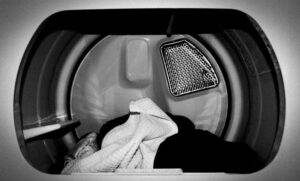Diagnosis appliances are tools and equipment used in various industries to identify and analyze problems or faults in machinery, systems, or processes. These appliances play a crucial role in ensuring the smooth operation and efficiency of different industries, including automotive, electrical, manufacturing, and healthcare. By accurately diagnosing issues, these appliances help in preventing potential failures, reducing downtime, and improving overall safety and productivity.
Key Takeaways
- Proper diagnosis tools are crucial for accurate and efficient repairs.
- Basic tools like wrenches and screwdrivers are necessary for diagnosis, but advanced tools like oscilloscopes and gas analyzers can provide more detailed information.
- Electrical testing equipment is essential for diagnosing electrical issues in appliances.
- Digital multimeters are versatile tools that can measure voltage, current, and resistance.
- Infrared thermometers, pressure gauges, and gas analyzers are specialized tools that can provide specific information about an appliance’s performance.
Importance of Proper Diagnosis Tools
Proper diagnosis tools are essential for accurate diagnosis in any industry. These tools enable technicians and professionals to identify the root cause of a problem or fault with precision. Without the right tools, diagnosis can be challenging and may lead to inaccurate results, which can have severe consequences.
Inaccurate diagnosis can have a significant impact on safety and efficiency. For example, in the automotive industry, using improper diagnosis tools can lead to misdiagnosis of engine problems, resulting in unnecessary repairs or replacements. This not only wastes time and money but also poses a safety risk if the underlying issue is not properly addressed.
Basic Tools Required for Diagnosis
Basic diagnosis tools are the foundation of any diagnostic process. These tools are simple yet effective in identifying common problems and faults. Some examples of basic diagnosis tools include:
1. Screwdrivers: Screwdrivers are essential for opening up equipment or machinery to access internal components. They come in various sizes and types to accommodate different screw heads.
2. Pliers: Pliers are versatile tools used for gripping, bending, and cutting wires or other materials. They are commonly used in electrical and automotive diagnostics.
3. Wrenches: Wrenches are used for tightening or loosening nuts and bolts. They come in different sizes and types, such as adjustable wrenches or socket wrenches.
4. Test Lights: Test lights are used to check for the presence of electrical current in circuits or components. They help identify if there is a power supply issue or a faulty connection.
Advanced Tools for Diagnosis
While basic diagnosis tools are essential, advanced diagnosis tools offer more sophisticated capabilities for in-depth analysis and troubleshooting. These tools are designed to handle complex systems and provide accurate results. Some examples of advanced diagnosis tools include:
1. Diagnostic Scanners: Diagnostic scanners are used in the automotive industry to read and interpret data from a vehicle’s onboard computer system. They can identify specific fault codes, monitor sensor readings, and perform various tests to diagnose engine problems.
2. Infrared Cameras: Infrared cameras use thermal imaging technology to detect temperature variations in objects or systems. They are commonly used in electrical diagnostics to identify overheating components or faulty connections.
3. Data Loggers: Data loggers are devices that record and analyze data over a period of time. They are used in various industries to monitor and diagnose issues related to temperature, humidity, pressure, or other variables.
4. Vibration Analyzers: Vibration analyzers are used to measure and analyze vibrations in machinery or equipment. They can detect imbalances, misalignments, or other mechanical issues that may cause excessive vibrations and lead to failures.
Electrical Testing Equipment
Electrical testing equipment is specifically designed for diagnosing electrical problems and ensuring the safety and efficiency of electrical systems. Some examples of electrical testing equipment include:
1. Voltage Testers: Voltage testers are used to check the presence of voltage in electrical circuits or outlets. They help identify if there is a power supply issue or if a circuit is live.
2. Insulation Testers: Insulation testers measure the resistance of insulation materials used in electrical systems. They help identify if there is any leakage or breakdown in insulation, which can lead to electrical faults or hazards.
3. Circuit Breaker Finders: Circuit breaker finders are used to locate specific circuit breakers in electrical panels or distribution boards. They help identify the correct breaker to isolate or reset during troubleshooting.
4. Power Quality Analyzers: Power quality analyzers measure and analyze various parameters of electrical power, such as voltage, current, frequency, and harmonics. They help identify issues related to power quality, such as voltage sags, surges, or harmonic distortions.
Digital Multimeters for Diagnosis
Digital multimeters are versatile diagnostic tools used in various industries to measure and analyze electrical parameters. They can measure voltage, current, resistance, capacitance, frequency, and other variables. Digital multimeters are essential for troubleshooting electrical circuits, testing components, and verifying the accuracy of electrical measurements.
Digital multimeters are used for diagnosis by connecting the test leads to the circuit or component being tested. The multimeter then displays the measured value on its digital screen. By comparing the measured value with the expected or normal value, technicians can identify if there is a problem or fault in the circuit or component.
Some examples of digital multimeters include Fluke 87V True RMS Multimeter, Klein Tools MM600 Auto-Ranging Multimeter, and Extech EX330 Autoranging Mini Multimeter.
Oscilloscopes for Diagnosis
Oscilloscopes are diagnostic tools used to visualize and analyze electrical waveforms. They display voltage signals as a graph on a screen, allowing technicians to observe the shape, frequency, and amplitude of the waveform. Oscilloscopes are commonly used in electronics, telecommunications, and automotive diagnostics.
Oscilloscopes are used for diagnosis by connecting probes to the circuit or component being tested. The oscilloscope then captures and displays the waveform on its screen. Technicians can analyze the waveform to identify abnormalities or anomalies that may indicate a problem or fault.
Some examples of oscilloscopes include Tektronix TBS1052B Digital Storage Oscilloscope, Rigol DS1054Z Digital Oscilloscope, and Keysight DSOX1102G Oscilloscope.
Infrared Thermometers for Diagnosis
Infrared thermometers, also known as non-contact thermometers, are diagnostic tools used to measure temperature without physical contact. They use infrared technology to detect and convert thermal radiation into temperature readings. Infrared thermometers are commonly used in HVAC, electrical, and automotive diagnostics.
Infrared thermometers are used for diagnosis by pointing the device at the object or system being tested. The thermometer then measures the infrared radiation emitted by the object and displays the temperature reading on its screen. Technicians can compare the measured temperature with the expected or normal temperature to identify if there is a problem or fault.
Some examples of infrared thermometers include Fluke 62 Max+ Infrared Thermometer, Etekcity Lasergrip 774 Non-contact Digital Laser Infrared Thermometer, and Klein Tools IR5 Dual Laser Infrared Thermometer.
Pressure Gauges for Diagnosis
Pressure gauges are diagnostic tools used to measure and monitor pressure in various systems or processes. They can measure both positive and negative pressure and are commonly used in HVAC, plumbing, and automotive diagnostics.
Pressure gauges are used for diagnosis by connecting them to the system or component being tested. The gauge then displays the pressure reading on its dial or digital screen. Technicians can compare the measured pressure with the expected or normal pressure to identify if there is a problem or fault.
Some examples of pressure gauges include Winters PEM Series Steel Dual Scale Economy Pressure Gauge, Ashcroft 45-1279-SS-04L-XFM Pressure Gauge, and WIKA 213.53 2.5″ Liquid-Filled Stainless Steel Pressure Gauge.
Gas Analyzers for Diagnosis
Gas analyzers are diagnostic tools used to measure and analyze the composition of gases in various applications. They can detect and quantify different gases, such as oxygen, carbon dioxide, carbon monoxide, and volatile organic compounds. Gas analyzers are commonly used in environmental monitoring, industrial processes, and automotive emissions testing.
Gas analyzers are used for diagnosis by sampling the gas from the system or environment being tested. The analyzer then analyzes the gas sample and displays the concentration or composition of different gases on its screen. Technicians can compare the measured values with the expected or normal values to identify if there is a problem or fault.
Some examples of gas analyzers include Bacharach PCA3 Portable Combustion Analyzer, Testo 310 Residential Combustion Analyzer Kit, and UEi Test Instruments CO71A Carbon Monoxide Analyzer.
In conclusion, diagnosis appliances and proper diagnosis tools play a crucial role in various industries by enabling accurate diagnosis of problems and faults. Basic tools provide a foundation for diagnosis, while advanced tools offer more sophisticated capabilities for in-depth analysis. Electrical testing equipment, such as digital multimeters and oscilloscopes, are essential for diagnosing electrical issues. Infrared thermometers, pressure gauges, and gas analyzers are specialized tools used for diagnosing temperature, pressure, and gas-related problems. By using the right diagnosis appliances and tools, industries can ensure safety, efficiency, and productivity.
What Other Tools Are Necessary for Appliance Diagnosis Besides Those for Refrigerator?
In addition to the basic tools for refrigerator diagnosis, it’s essential to have a multimeter for checking electrical components, a flashlight for examining hard-to-reach areas, and a leak detector for identifying refrigerant leaks. These additional refrigerator diagnosis tools needed are crucial for comprehensive appliance diagnostics.
FAQs
What are diagnosis appliances?
Diagnosis appliances are tools used by healthcare professionals to diagnose and treat various medical conditions.
What are the different types of diagnosis appliances?
There are various types of diagnosis appliances, including X-ray machines, ultrasound machines, CT scanners, MRI machines, and blood glucose monitors.
What is an X-ray machine?
An X-ray machine is a medical device that uses electromagnetic radiation to produce images of the inside of the body.
What is an ultrasound machine?
An ultrasound machine is a medical device that uses high-frequency sound waves to produce images of the inside of the body.
What is a CT scanner?
A CT scanner is a medical device that uses X-rays and computer technology to produce detailed images of the inside of the body.
What is an MRI machine?
An MRI machine is a medical device that uses a strong magnetic field and radio waves to produce detailed images of the inside of the body.
What is a blood glucose monitor?
A blood glucose monitor is a medical device used by people with diabetes to measure their blood sugar levels.



